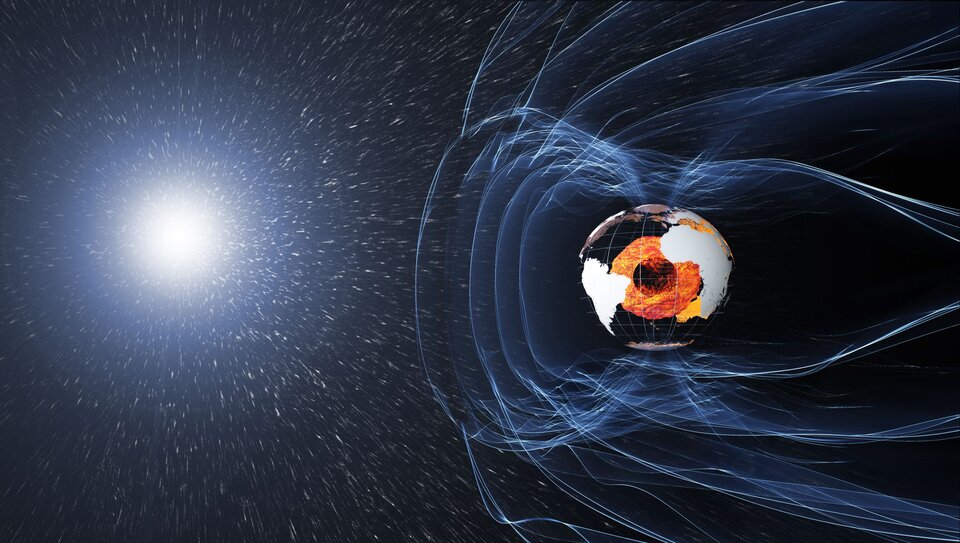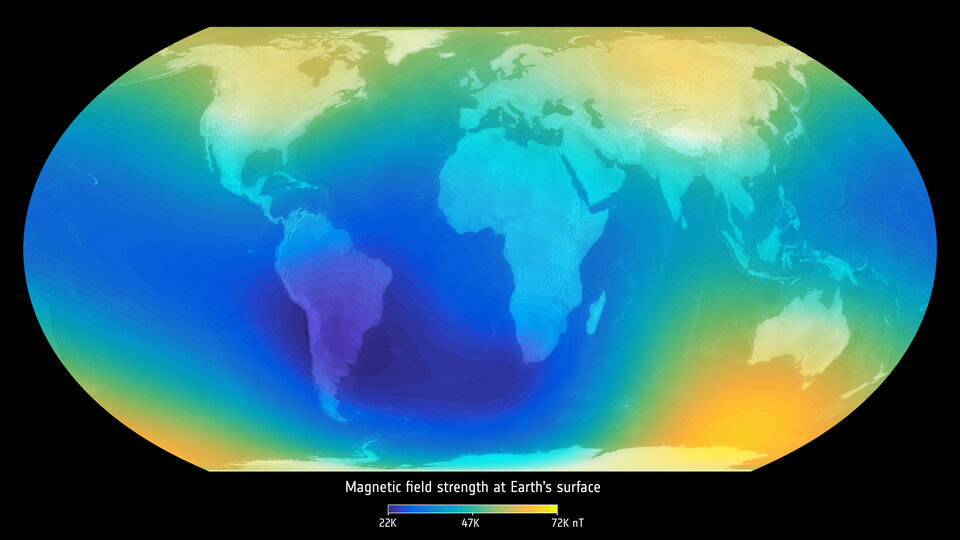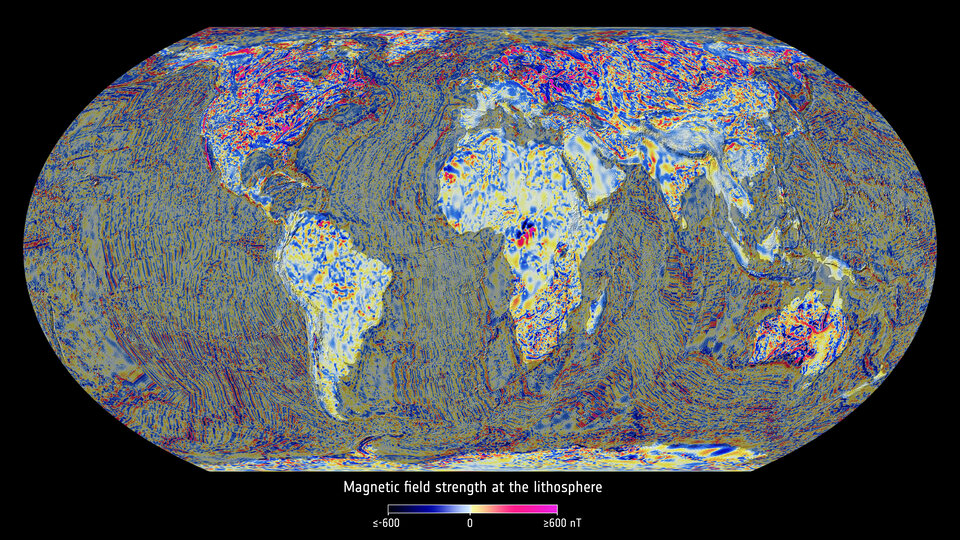

The scary sound of Earth’s magnetic field
source link: https://www.esa.int/Applications/Observing_the_Earth/FutureEO/Swarm/The_scary_sound_of_Earth_s_magnetic_field
Go to the source link to view the article. You can view the picture content, updated content and better typesetting reading experience. If the link is broken, please click the button below to view the snapshot at that time.

Applications
The scary sound of Earth’s magnetic field
Despite being essential to life on Earth, the magnetic field isn’t something we can actually see in itself, or ever hear. But, remarkably, scientists at the Technical University of Denmark have taken magnetic signals measured by ESA’s Swarm satellite mission and converted them into sound – and for something that protects us, the result is pretty scary.
Earth’s magnetic field is a complex and dynamic bubble that keeps us safe from cosmic radiation and charged particles carried by powerful winds flowing from the Sun. When these particles collide with atoms and molecules – mainly oxygen and nitrogen – in the upper atmosphere, some of the energy in the collisions is transformed into the green-blue light that is typical of the aurora borealis, which can sometimes be seen from high-northern latitudes.
While the aurora borealis offers a visual display of charged particles from the Sun interacting with Earth’s magnetic field, actually being able to hear the magnetic field generated by Earth or its interaction with solar winds is another matter.
Our magnetic field is largely generated by an ocean of superheated, swirling liquid iron that makes up the outer core around 3000 km beneath our feet. Acting as a spinning conductor in a bicycle dynamo, it creates electrical currents, which in turn, generate our continuously changing electromagnetic field.
Launched in 2013, ESA’s trio of Swarm satellites are being used to understand exactly how our magnetic field is generated by measuring precisely the magnetic signals that stem not only from Earth’s core, but also from the mantle, crust and oceans, as well as from the ionosphere and magnetosphere. Swarm is also leading to new insights into weather in space.
Musician and project supporter Klaus Nielsen, from the Technical University of Denmark, explains, “The team used data from ESA’s Swarm satellites, as well as other sources, and used these magnetic signals to manipulate and control a sonic representation of the core field. The project has certainly been a rewarding exercise in bringing art and science together.”
It might sound like the stuff of nightmares, but, remarkably, this audio clip represents the magnetic field generated by Earth’s core and a solar storm.
“We gained access to a very interesting sound system consisting of over 30 loudspeakers dug into the ground at the Solbjerg Square in Copenhagen.
“We have set it up so that each speaker represents a different location on Earth and demonstrates how our magnetic field has fluctuated over the last 100 000 years.
“Throughout this week, visitors will be able to hear the amazing rumble of our magnetic field – so if you are in Copenhagen come along and check out this unique opportunity.
“The rumbling of Earth’s magnetic field is accompanied by a representation of a geomagnetic storm that resulted from a solar flare on 3 November 2011, and indeed it sounds pretty scary.”
The intention, of course, is not to frighten people – it is a quirky way of reminding us that the magnetic field exists and although it’s rumble is a little unnerving, the existence of life on Earth is dependent on it.
The loudspeakers at Solbjerg Square in Copenhagen, Denmark, will broadcast the rumble of Earth’s magnetic field on 24–30 October around 08:00, 13:00 and 19:00.
Recommend
About Joyk
Aggregate valuable and interesting links.
Joyk means Joy of geeK


